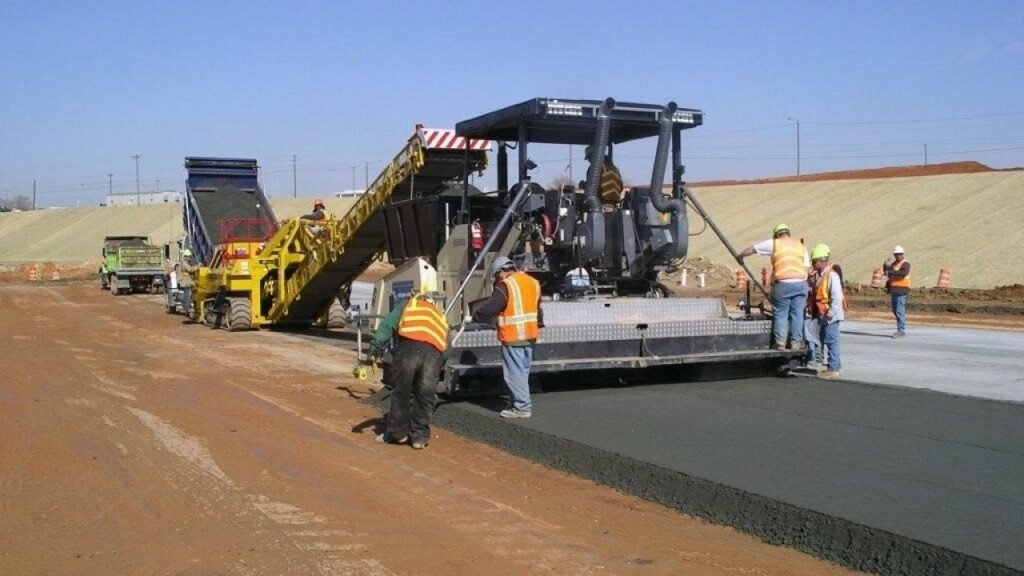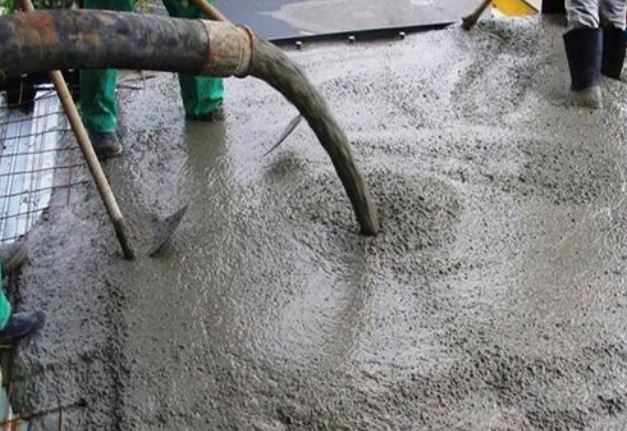What are the advantages and disadvantages of compaction? The benefits of compaction depend on what is being compacted and the specific type of compaction process.

Overall, compaction presents a number of advantages because it can reduce costs, increase shipping space and production time, and improve safety within a plant environment.
However, there are also disadvantages that should be considered as well. One example might be the increased energy consumption associated with certain types of compaction equipment in association with an increased risk of injury to workers.
This article focuses on the advantages and disadvantages aspects of compaction and how it can improve a plant’s efficiency.
What Is Compaction?
Compaction is a process of making dense material (for example, soil) more compact. Compaction can take place in a variety of ways, but generally involves machines that compress the material and construct a solid structure.
It results in the rearrangement of soil particles and the reduction of voids. Soils that are highly compacted contain very few voids resulting in soil having a higher unit weight. If a soil is made denser, it is said to have been compacted.
When compacting soils on the ground, the key factor to consider is the density of the soil. The unit weight of compacted soil can be taken as a measure of its density.
Unit weight is defined as the mass in grams of a given volume, divided by its area in square meters. In regions where the soils are hard and dense, the unit weight is much higher than that in regions with soils that are loose and have a large proportion of voids.
Compaction is performed to improve various characteristics of soils and to achieve specific engineering properties.
The compaction equipment is used to strike the ground with force to compress the soil and create a more solid structure with few voids. This process of densifying soil forms a harder texture, thus creating a sturdier foundation on which to build or grow plants.
After compacted soils have been left to rest for a period of weeks or months, it is possible that they could lose some of their density, as the soil particles try to occupy their original spaces in the soil bed. This can result in less compacted soils.
Compaction reduces the amount of space required for materials being transported or stored and helps to protect them from damage during handling or storage. This can be achieved by using various methods, including physical techniques such as hand-mixing with heavy equipment or mechanical techniques like vibration.
Plant layout and access to equipment is probably one of the greatest concerns in any plant with regard to compaction. If there is poor access to both equipment and the product being worked with, then it will be more difficult for workers to complete their jobs effectively.
As a result, if there are safety or operational issues associated with compaction, this may be easily overlooked in favor of adjusting the process so that equipment can be readily accessed.
However, by improving overall plant layout, problems related to compaction may become easier to address.
All types of construction processes require soil compaction to prevent the settlement of soil over time. This settlement can cause damage to the structure by inducing bending stresses or settlement forces into the foundation.
Construction compaction equipment can also be equipped with vibrators to prevent frost heaving, a process that can cause significant damage to the structure if not continually monitored and controlled.
Compaction is very important in the fields of construction and manufacturing, as it helps to reduce costs used in building or assembling plants or machinery. It reduces shipping space, production time, and eliminates many hazards associated with heavy lifting.
Well-compacted soils are highly dense with less total pore volume and very few large pores. Compacted soils also have a lower rate of water infiltration and drainage. This can be a problem, however, as it makes soils more susceptible to water erosion and displacement during rain storms.

Many soil compaction processes are designed to have a certain amount of porosity within the soil. This porosity is used to help reduce the rate of water infiltration and promote drainage from the soil.
This is beneficial in terms of providing water for plant growth and preventing volumetric expansion due to moisture uptake. It also helps prevent compaction-induced subsidence over time by promoting drainage from the soil.
However, this can be a drawback in that it may allow some unwanted materials (such as chemical contaminants) into the soil bed, which could prove very detrimental in terms of end product quality.
Having known what compaction is, let’s move into the advantages and disadvantages of compaction.
Advantages And Disadvantages Of Compaction
Here, we will be diving into the advantages and disadvantages of compaction but firstly, we will look into the advantages of compaction and later to its disadvantages.
Advantages Of Compaction
The advantages of compaction are as follows:
1. Improved Product Quality & Efficiency
Compacted soil can help improve product quality because there is less risk of degradation due to swelling or expansion, resulting in fewer defects that may occur during production.
Additionally, compacted soils are typically more uniform than non-compacted soils, making materials easier to manufacture and improve product quality by reducing waste (excess materials being lost during manufacturing).
This is due to the fact that compacted soil allows for water infiltration, which prevents excessive shrinkage of materials that may cause distortion.
2. Reduced Wasted Space
By compacting the soil, it reduces waste in the shipping or storing process and smaller amounts of materials are required in order to complete a project.
3. Improved Plant Layout And Accessibility Of Equipment & Product
Compacted soil can help to improve plant layout, as the soil is denser and tends to be more solid and sturdy. This can help to create a more stable foundation, and make plants easier to access by workers.
4. Product Cost Savings
Compaction reduces labor and material costs, which results in cost savings for the manufacturer/producer. Furthermore, compaction can also reduce the amount of time for shipping or storing by reducing the volume of soil required.
5. Decreased Maintenance Costs
As compacted soils tend to be more solid and less prone to swelling, normally resulting in improved durability of soil construction and machinery components over time.
Now we have known the advantages of compaction, let’s move on to the disadvantages of compaction.
Disadvantages Of Compaction
The disadvantages of compaction includes:
1. Increased Spoilage & Exposure To Microorganisms And Chemicals
As with any compaction process, compacted soils tend to allow more water to seep into the soil profile, which could potentially increase spoilage of products that use compounds that are affected by water (such as solvents).
Additionally, compacted soil is more prone to microbial contamination because it can promote a faster drainage rate and reduce water potential. So if a batch of soil is exposed to more water, it also means there are more microorganisms present.
Faster drainage also means that there may be less oxygen for the microorganisms to use as part of their metabolic cycles. Furthermore, compacted soil can be exposed to potentially harmful chemical compounds during manufacturing, which may increase the risk of exposure due to reduced chemical barriers in the soil bed.
2. Damage To Machines & Equipment
As I mentioned earlier, compacted soils tend to be very solid and sturdy when compared with non-compacted soils. This can result in increased loads due to structural support and if the soil is not completely solid, it can cause equipment (such as machines or machinery) to shift or break over time.
Additionally, compaction can also reduce the air space between the soil and underlying material, which may lead to mechanical failure due to increased stress. This can be a problem during production when dealing with expanding materials, such as concrete.
3. Reduced Moisture Retention In Soil Beds & Increased Risk Of Root Damage And Exfoliation
By reducing the amount of pore space in soils, compacted soils tend to have more problems retaining moisture for plant growth, especially for non-endemic species (native plants).
Compacted soil can lead to higher risk of damage from root exfoliation, which is when plant roots grow through the soil bed and are damaged or detached from the root; leading to potentially reduced water and nutrient uptake.
In addition, if compacted soils are exposed to high amounts of water or moisture for extended periods of time, there may be less oxygen for the roots to use as part of their metabolic cycles.
This is because compacted soil tends not to allow a lot of water permeability. This may lead to increased risk of root rot and a lack of oxygen in the soil bed.
Compacted soils have their own set of advantages that can benefit manufacturers, but also come with some disadvantages that can lead to potential damage on equipment.
Conclusion
Compaction is a very important part of the construction and manufacturing industry. With the right compacting methods, compacted soils can help to improve product quality and reduce spoilage as well as risk of chemical contamination.
However, compaction also has some disadvantages that may lead to potential damage to equipment and machinery over time. So it’s important to understand the advantages and disadvantages of compaction, in order to make better decisions surrounding this topic.
All in all, we already have an overview on what compaction is and its advantages and disadvantages. As a part of the construction and manufacturing industry, compaction is an important process to be aware of.




